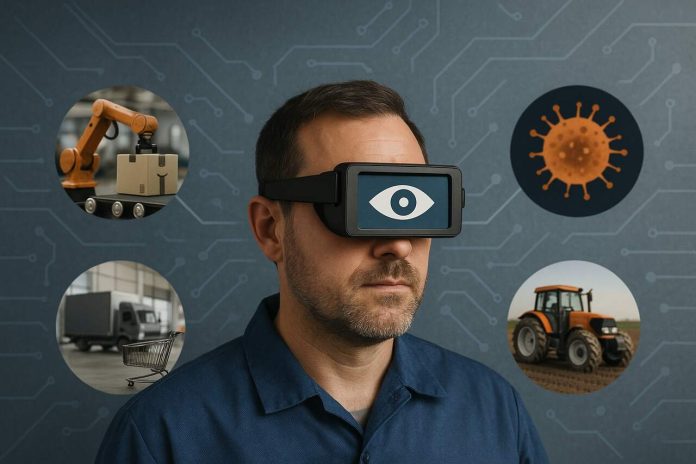Artificial intelligence has plenty of buzzwords attached to it, but one branch is quietly proving its value across industries: vision AI. Unlike other forms of AI that crunch numbers or analyze text, this one works with images. Cameras feed in the raw visuals, software interprets what it sees, and businesses get real-time information they can act on. The technology isn’t flashy, but it’s showing up everywhere from hospitals and factories to grocery aisles and shipping yards.
Seeing What People Miss
Think about the sheer amount of activity in a modern operation. Thousands of products rolling off an assembly line. Dozens of patients moving through a busy ward. Forklifts darting back and forth across a warehouse floor. It’s impossible for humans to catch everything, and traditional tracking systems only go so far.
Vision AI fills that blind spot. Instead of relying on barcodes or manual reports, it works directly with messy, unstructured visuals—the kind of data we take in with our own eyes. That means spotting a faulty batch of products before it leaves the factory, noticing a patient’s change in breathing, or recording the exact state of a truck at the moment it’s loaded.
Hospitals and Clinics
In healthcare, vision AI is being used in subtle but powerful ways. Some hospitals are installing systems that notice when a patient’s movements suggest a fall is about to happen. Others use cameras that track breathing and flag irregularities that might require quick intervention.
Doctors are also leaning on AI models trained to read scans. The software can highlight areas on an X-ray that deserve a second look, cutting down the chance of something being missed. The final call is still up to the physician, but the extra set of “eyes” is especially valuable in busy environments where speed matters.
Factory Floors
On the manufacturing side, vision AI is turning into a kind of tireless inspector. A camera mounted over a production line can scan every unit coming through, not just a sample. If something’s scratched, misaligned, or bent, it gets flagged immediately. That saves companies the cost of wasted materials and helps them stay in line with strict safety or compliance rules.
But it isn’t just about the products. Factories are also pointing cameras at the shop floor itself. Systems can confirm workers are wearing the right protective gear or spot early warning signs of equipment failure. Instead of waiting for a machine to break down, managers can deal with issues before they stop the line. It’s a quieter kind of efficiency, but one that pays off every day.
Shopping Aisles
For retailers, vision AI often works behind the curtain. Grocery chains use it to monitor shelves and send alerts before items sell out. It’s a small adjustment that can mean the difference between a sale made and a customer leaving frustrated.
Some stores are also studying how people move through their space. Which displays attract attention? Which aisles slow shoppers down? By analyzing those patterns, managers can tweak layouts and promotions to better match real behavior. On top of that, AI-powered cameras provide an extra layer of security, helping reduce theft without adding more staff.
Supply Chains
Nowhere is visibility more critical than in logistics. According to Lumenalta, 94% of companies in the sector admit they don’t have a full view of their operations. That lack of clarity can ripple through an entire system, resulting in late deliveries, bloated inventory, and dissatisfied customers.
Vision AI is beginning to change that. Companies using it report higher efficiency—up to 40% more—along with faster delivery times. The applications vary: some use cameras to track pallets in warehouses, others to double-check shipments before trucks leave. In certain yards, an AI vision camera is mounted at transfer points to capture vehicle conditions. That single step has cut down on costly damage disputes and given customers clearer proof of accountability.
Interestingly, the companies seeing the most success aren’t necessarily the ones with the biggest budgets. Lumenalta’s survey found that those who partner with experts instead of trying to build everything in-house get up and running faster, often moving from pilot projects to full-scale use in just weeks.
A Quiet Shift
What’s striking is how ordinary vision AI already feels once it’s in place. In hospitals, it’s just another monitor keeping an eye on patients. On a factory floor, it’s another tool in the quality-control kit. In a supermarket, it quietly checks the shelves. And in a shipping yard, it’s a camera mounted above a gate.
It doesn’t make headlines like other forms of AI, but maybe that’s the point. Vision AI isn’t designed to dazzle. It’s meant to notice the small things that people miss, like the details that keep products moving, patients safer, and businesses running on time.
